24 products
-
Gradient Mountain Three Tea Caddies Set
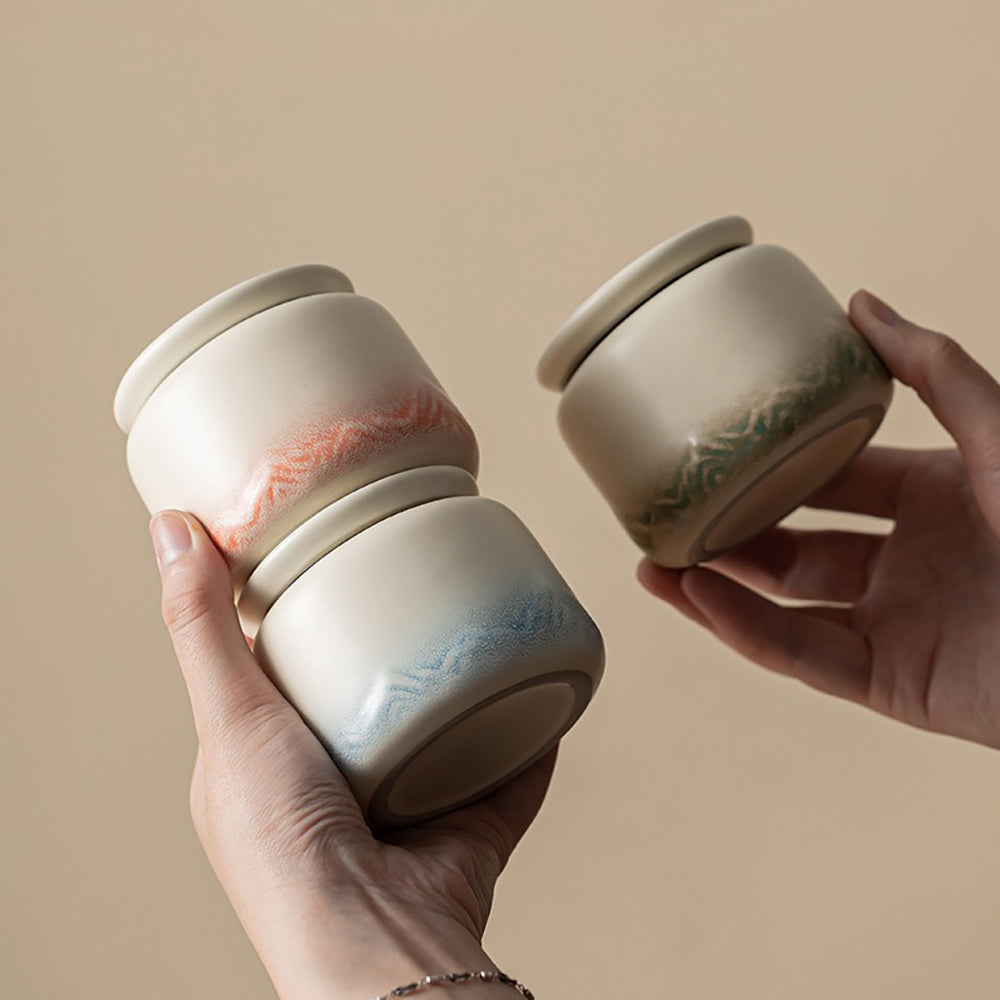 Vendor:Gradient Mountain Three Tea Caddies SetUmi Tea Sets
Vendor:Gradient Mountain Three Tea Caddies SetUmi Tea Sets- Regular price
-
$45.98 USD - Regular price
-
- Sale price
-
$45.98 USD
Quick view
-
Distant Mountains Two Tea Caddies Set
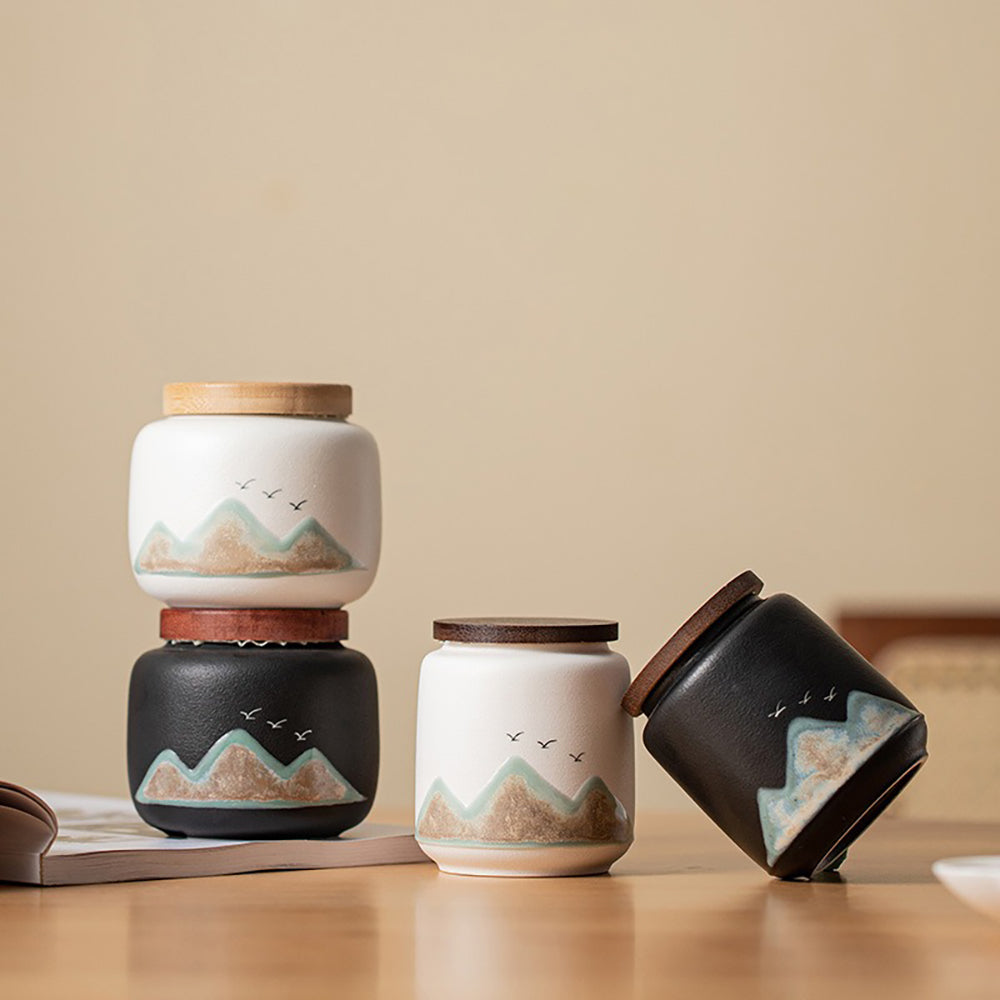 Vendor:Distant Mountains Two Tea Caddies SetUmi Tea Sets
Vendor:Distant Mountains Two Tea Caddies SetUmi Tea Sets- Regular price
-
$39.98 USD - Regular price
-
- Sale price
-
$39.98 USD
Quick view
-
Floral Metal Tea Caddy
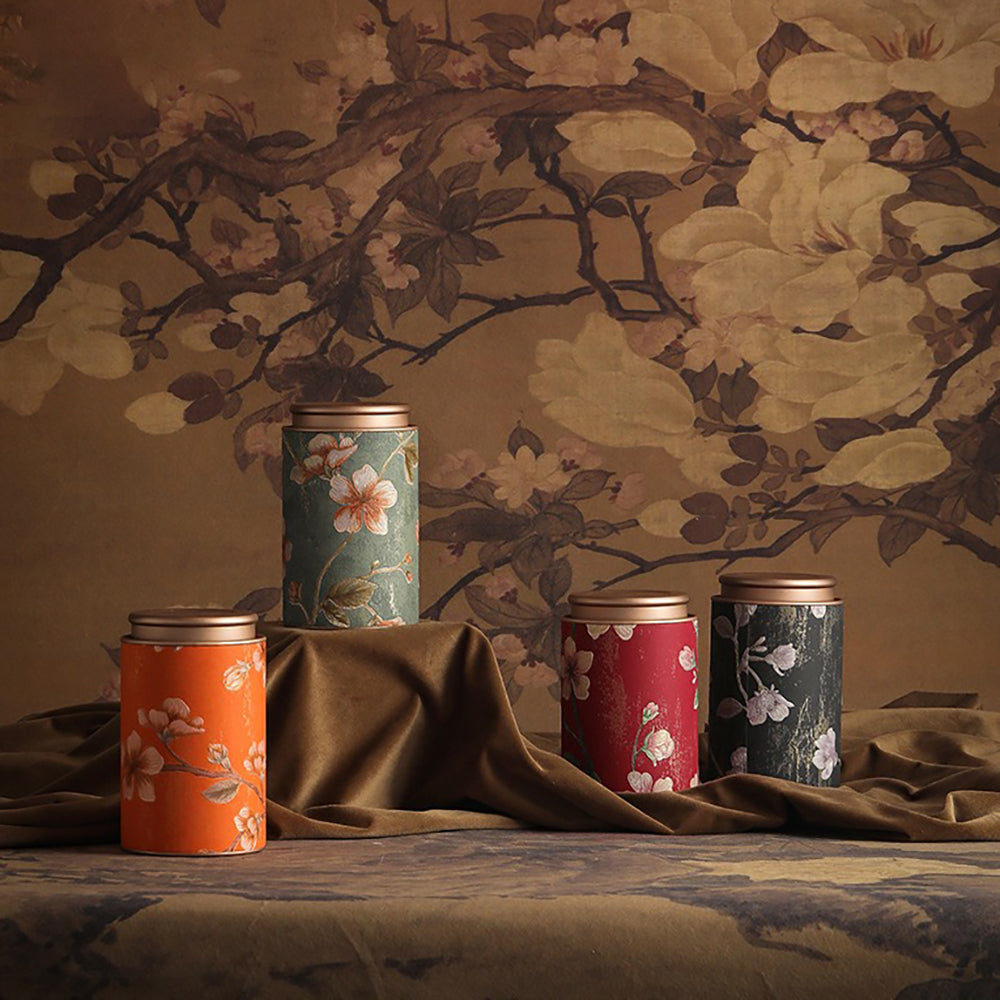 Floral Metal Tea Caddy
Floral Metal Tea Caddy- Regular price
-
$17.98 USD - Regular price
-
- Sale price
-
$17.98 USD
Quick view
-
Handmade Pottery Tea Caddy
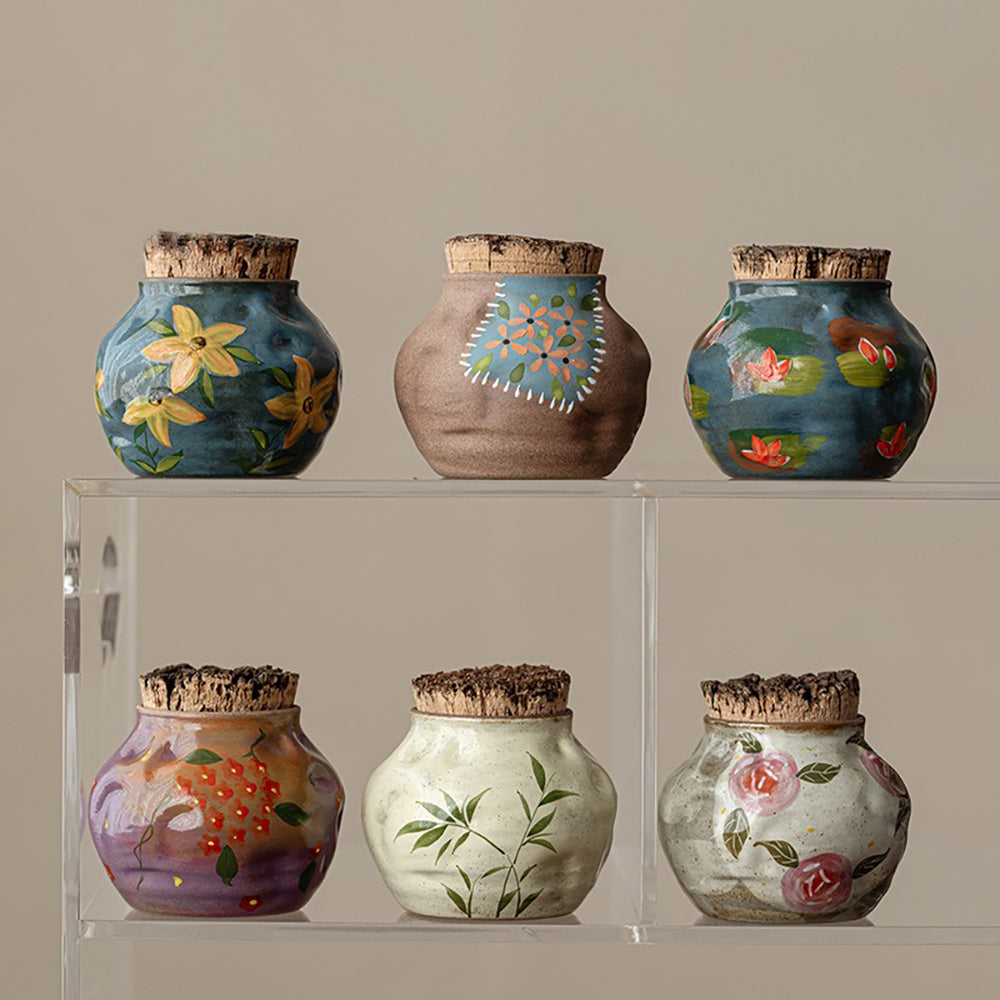 Vendor:Handmade Pottery Tea CaddyUmi Tea Sets
Vendor:Handmade Pottery Tea CaddyUmi Tea Sets- Regular price
-
$29.98 USD - Regular price
-
- Sale price
-
$29.98 USD
Quick view
-
Gradient Ceramic Portable Four Tea Caddies Set
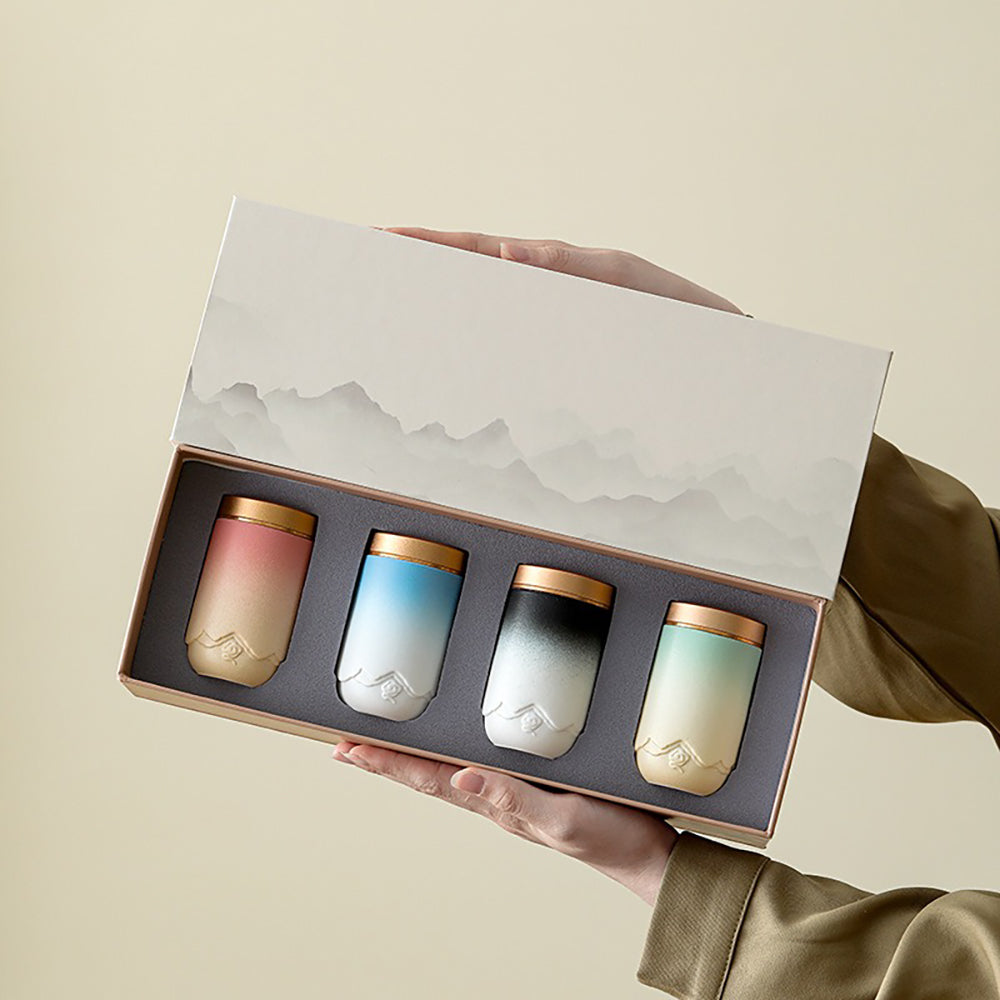 Vendor:Gradient Ceramic Portable Four Tea Caddies SetUmi Tea Sets
Vendor:Gradient Ceramic Portable Four Tea Caddies SetUmi Tea Sets- Regular price
-
$49.98 USD - Regular price
-
- Sale price
-
$49.98 USD
Quick view
-
Coarse Pottery Four Tea Caddies Set
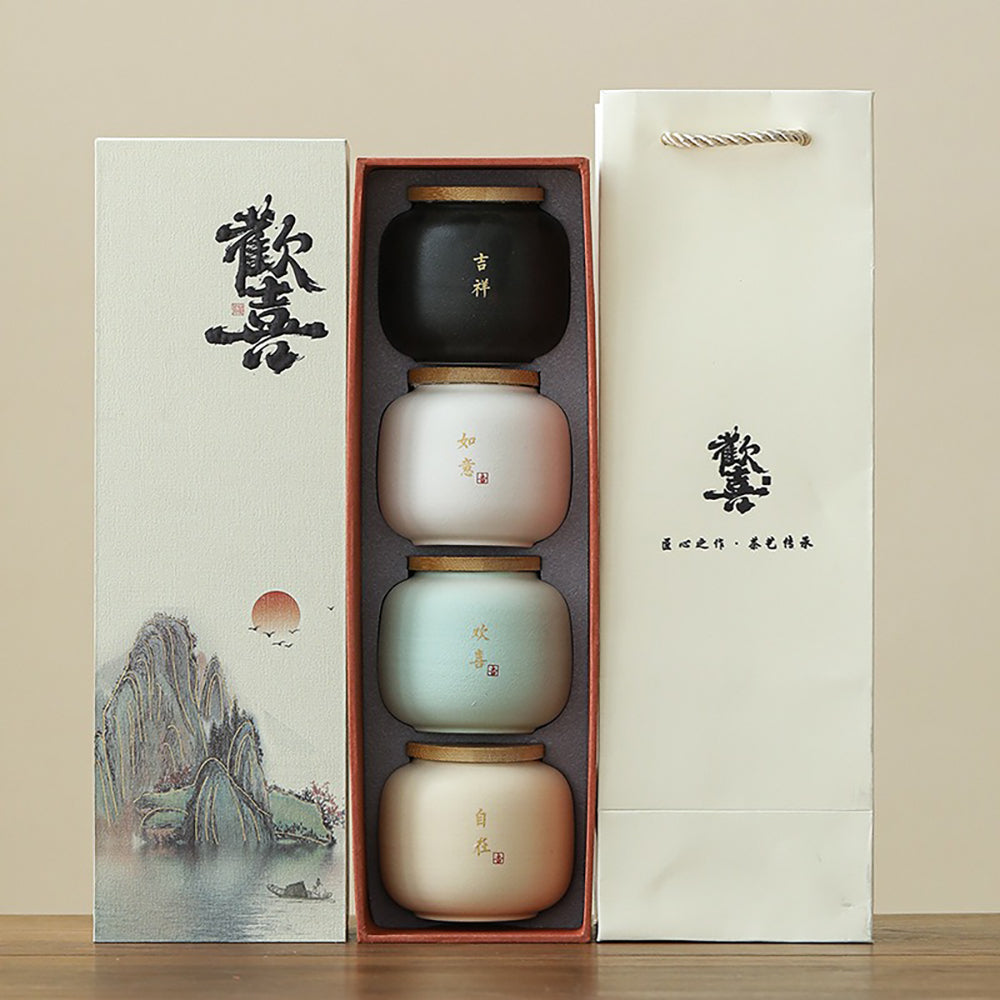 Vendor:Coarse Pottery Four Tea Caddies SetUmi Tea Sets
Vendor:Coarse Pottery Four Tea Caddies SetUmi Tea Sets- Regular price
-
$39.98 USD - Regular price
-
- Sale price
-
$39.98 USD
Quick view
-
Hand-painted Ceramic Tea Caddy
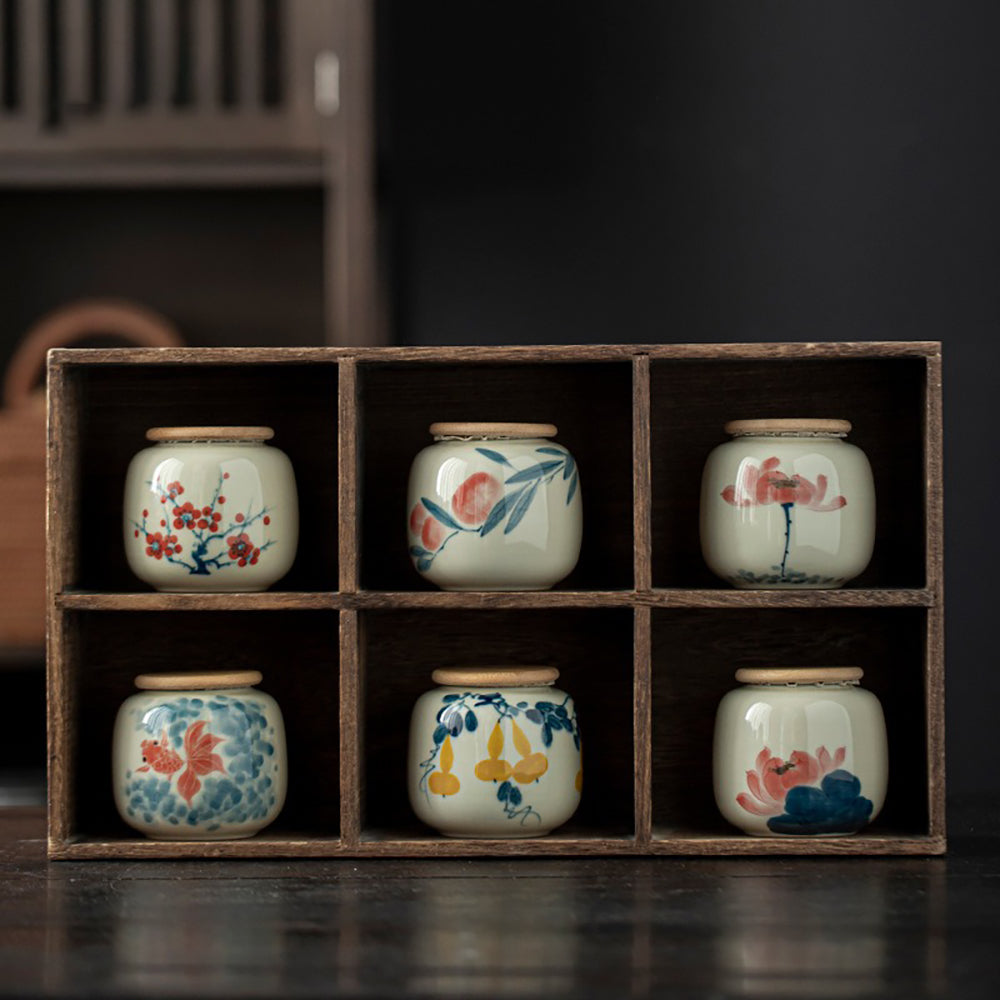 Vendor:Hand-painted Ceramic Tea CaddyUmi Tea Sets
Vendor:Hand-painted Ceramic Tea CaddyUmi Tea Sets- Regular price
-
$23.98 USD - Regular price
-
- Sale price
-
$23.98 USD
Quick view
-
Magpie and Flower Enamel Six Tea Caddies Set
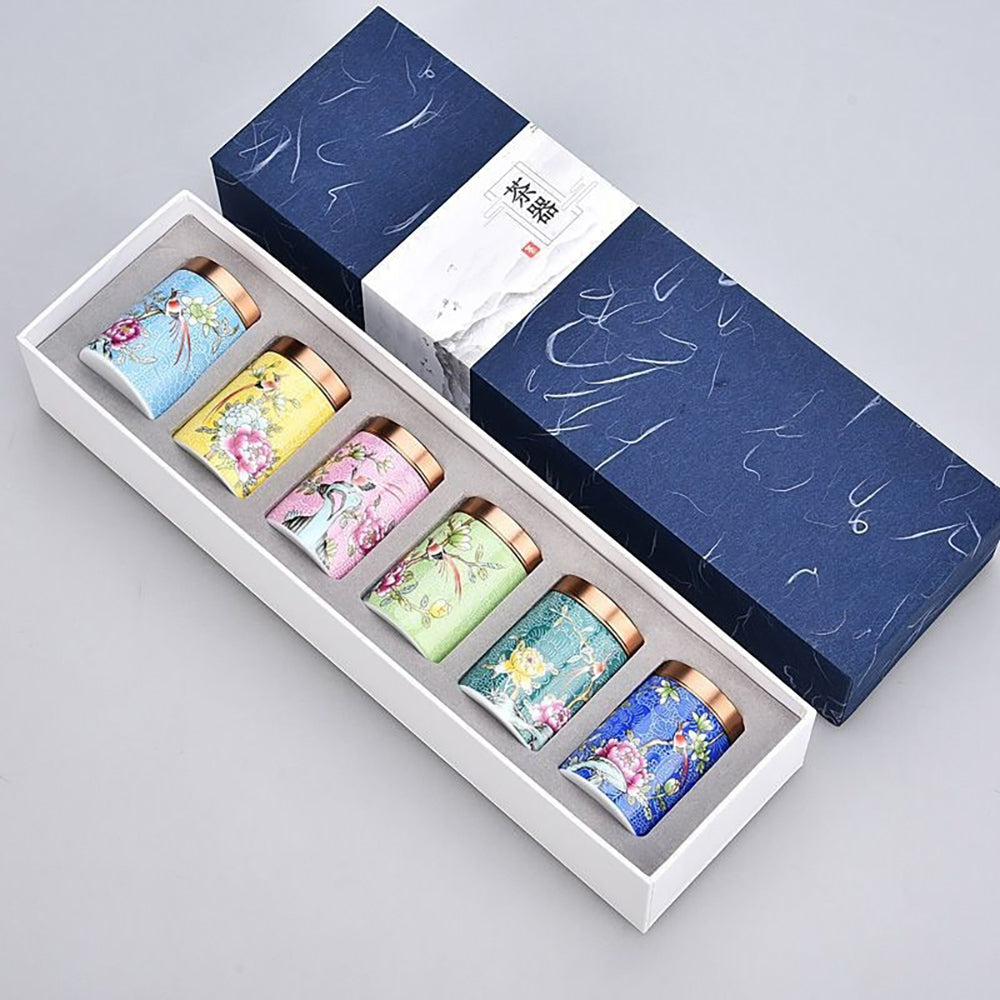 Vendor:Magpie and Flower Enamel Six Tea Caddies SetUmi Tea Sets
Vendor:Magpie and Flower Enamel Six Tea Caddies SetUmi Tea Sets- Regular price
-
$49.98 USD - Regular price
-
- Sale price
-
$49.98 USD
Quick view
-
Japanese Mountain Ceramic Tea Caddy
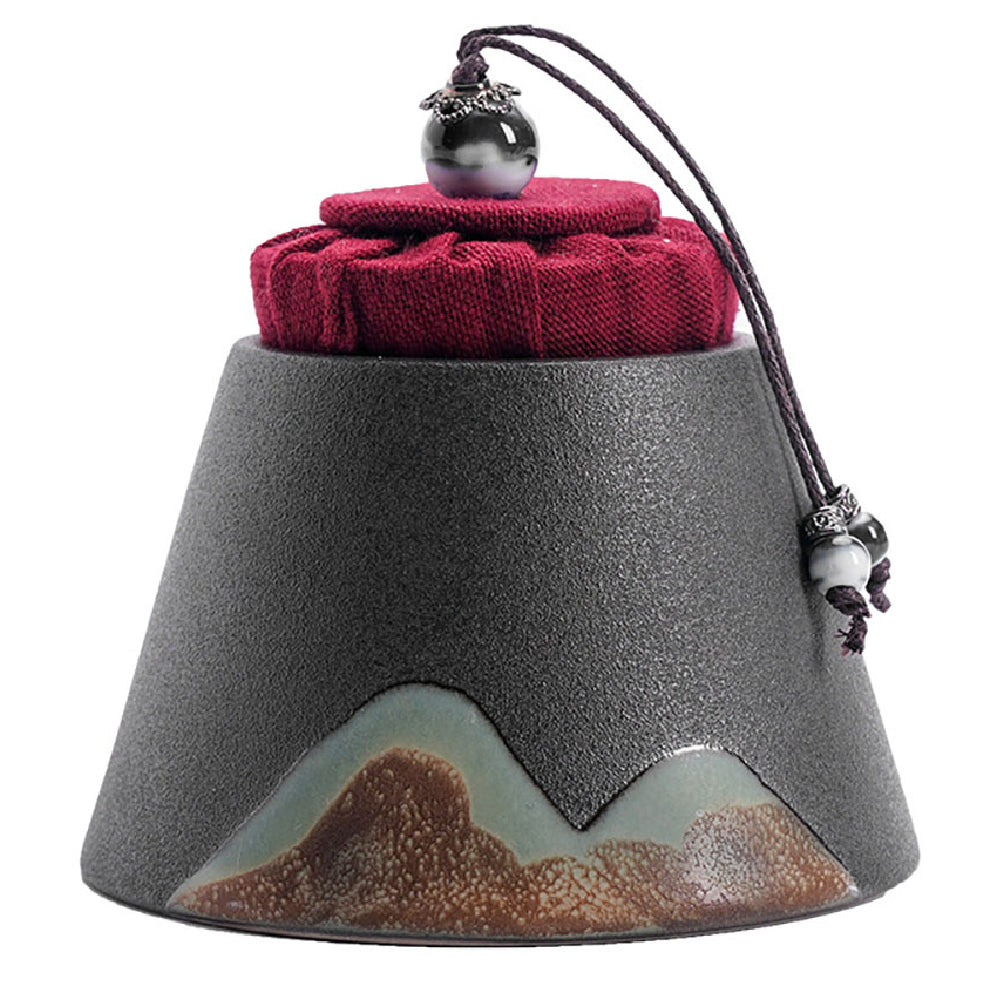 Vendor:Japanese Mountain Ceramic Tea CaddyUmi Tea Sets
Vendor:Japanese Mountain Ceramic Tea CaddyUmi Tea Sets- Regular price
-
$27.98 USD - Regular price
-
$33.58 USD - Sale price
-
$27.98 USD
Quick view
-
Lotus Shaped Ge Kiln Tea Caddy
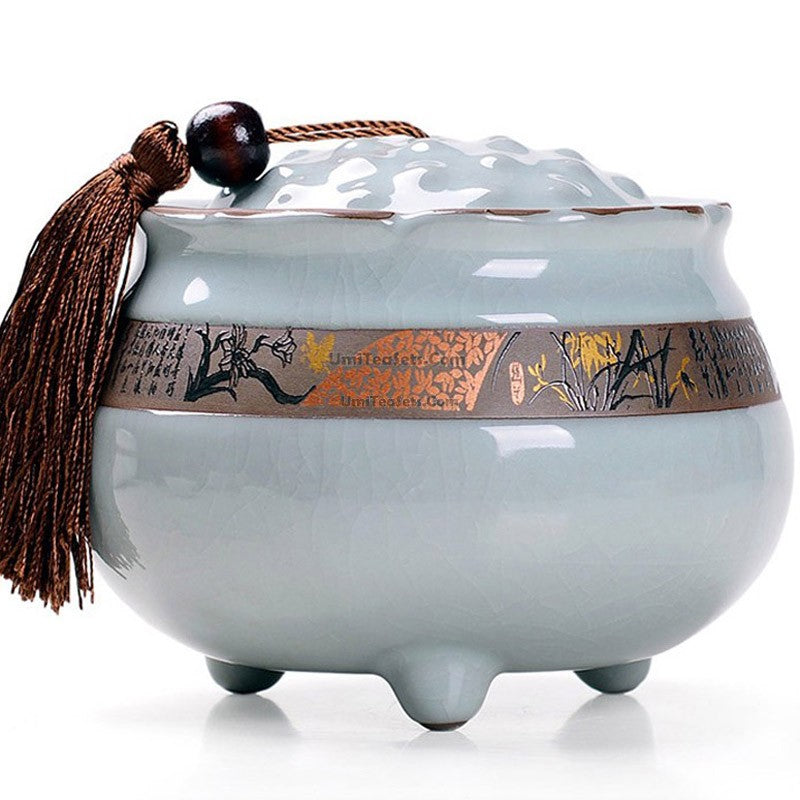 Vendor:Lotus Shaped Ge Kiln Tea CaddyUmi Tea Sets
Vendor:Lotus Shaped Ge Kiln Tea CaddyUmi Tea Sets- Regular price
-
$39.98 USD - Regular price
-
$43.98 USD - Sale price
-
$39.98 USD
Quick view
-
Five Cattles Brass Tea Caddy
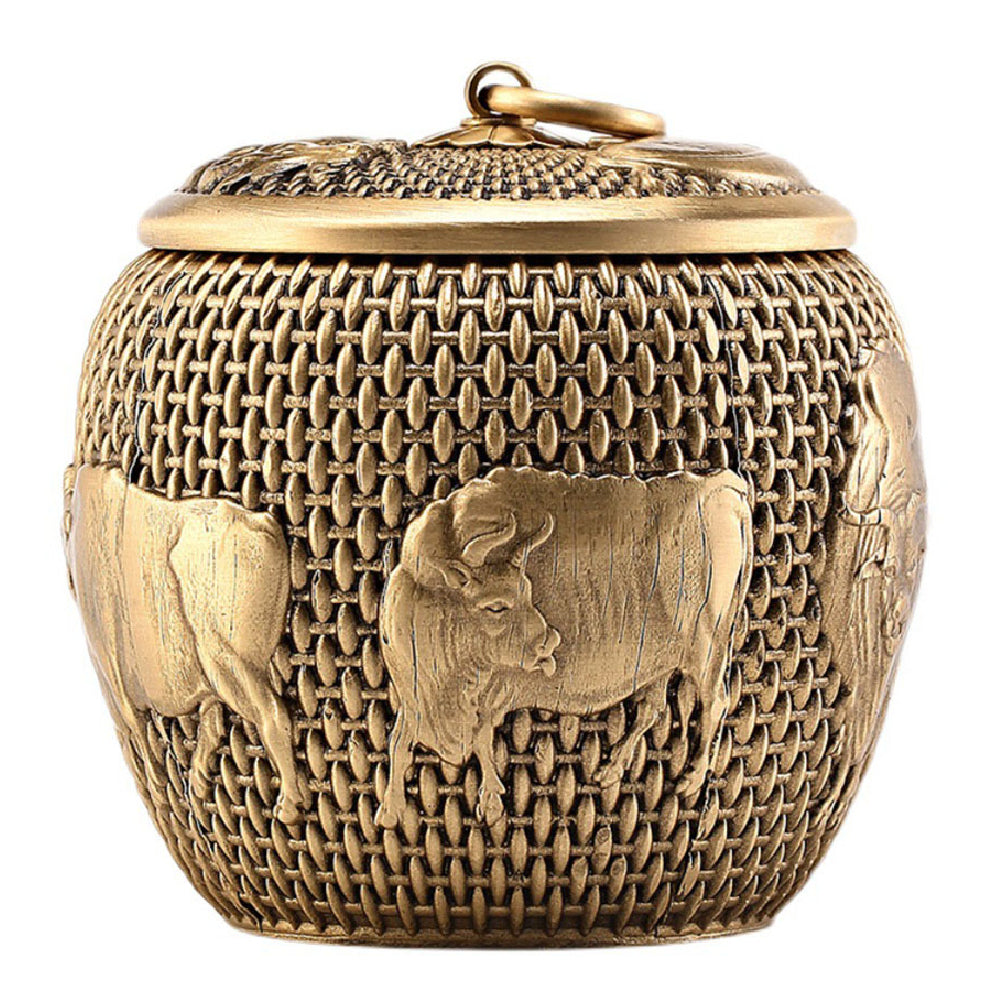 Vendor:Five Cattles Brass Tea CaddyUmi Tea Sets
Vendor:Five Cattles Brass Tea CaddyUmi Tea Sets- Regular price
-
$78.98 USD - Regular price
-
$86.88 USD - Sale price
-
$78.98 USD
Quick view
-
Purple Clay Bamboo Pattern Tea Caddy
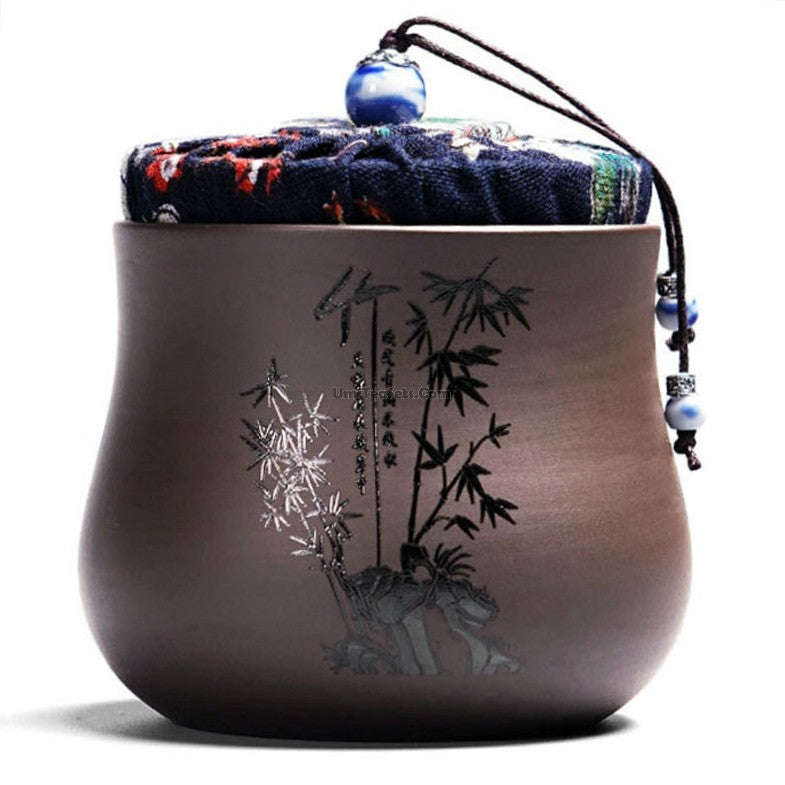 Vendor:Purple Clay Bamboo Pattern Tea CaddyUmi Tea Sets
Vendor:Purple Clay Bamboo Pattern Tea CaddyUmi Tea Sets- Regular price
-
$29.98 USD - Regular price
-
$35.98 USD - Sale price
-
$29.98 USD
Quick view

The Charm of Tea Caddies: Exploring the Art of Tea Preservation
1. Why Use a Tea Caddy?

After being picked and processed, tea leaves need to be properly stored to maintain their taste and aroma. Tea caddies are practical tools designed precisely for this purpose. Tea caddies can block light, air, moisture, and foreign odors, thus slowing down the oxidation and deterioration of the tea leaves, ensuring the tea remains at its best quality.
At the same time, certain teas will gradually ferment and develop new flavors, such as Pu'er and white tea. Over time, the taste of Pu'er tea becomes richer, the color of the tea liquor turns increasingly red, and the aroma deepens. A proper fermentation process helps enhance the quality of Pu'er tea, making it more valuable for collection. A good tea caddy is like an oak barrel for aging fine wine, ensuring the tea leaves are always in a favorable state for fermentation. Therefore, choosing a high-quality tea caddy is essential and beneficial.
2. The Styles of Tea Caddy
 Purple Clay tea Caddy: because the purple clay is double pore structure, it is porous material. It can be used to store tea and keep tea fresh.
Purple Clay tea Caddy: because the purple clay is double pore structure, it is porous material. It can be used to store tea and keep tea fresh.
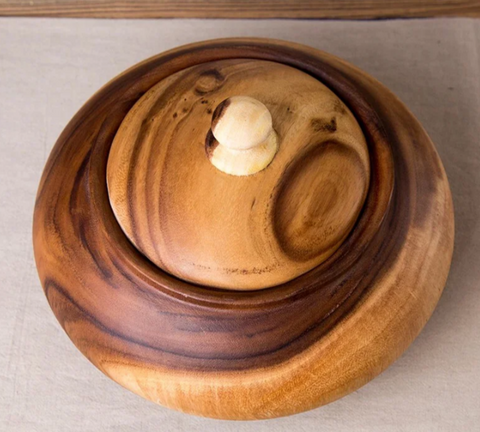 Wooden Tea Caddy: It has good sealing performance, and the price is reasonable, suitable for common tea storage, but it is not moisture-proof.
Wooden Tea Caddy: It has good sealing performance, and the price is reasonable, suitable for common tea storage, but it is not moisture-proof.

Paper Tea Caddy: Sealing performance is not good, but the price is much lower, it suitable for common family use. It is not suitable to use this kind of tea caddy to store more valuable tea and long-term preservation.
 Stainless Steel Tea Caddy: Good sealing performance, medium price, good moisture and light proof performance, suitable for family storage tea leaves.
Stainless Steel Tea Caddy: Good sealing performance, medium price, good moisture and light proof performance, suitable for family storage tea leaves.
 Bamboo Tea Caddy: Sealing performance is not good, the price is reasonable, suitable for storing middle and low grade tea.
Bamboo Tea Caddy: Sealing performance is not good, the price is reasonable, suitable for storing middle and low grade tea.
 Porcelain Tea Caddy: General sealing performance, good light and moisture resistance. But it is easy damage, but the storage is rather good.
Porcelain Tea Caddy: General sealing performance, good light and moisture resistance. But it is easy damage, but the storage is rather good.
 Brass Tea Caddy: General sealing performance, good light proof performance, but the moisture-proof performance is poor. It may be rust for use a long time. It is not suitable for storing rare tea.
Brass Tea Caddy: General sealing performance, good light proof performance, but the moisture-proof performance is poor. It may be rust for use a long time. It is not suitable for storing rare tea.
 Glass tea Caddy: The transparent nature of glass can make you see the type of tea more clearly. The disadvantage is that the light may affect the nature of tea. So it needs to be kept away from light.
Glass tea Caddy: The transparent nature of glass can make you see the type of tea more clearly. The disadvantage is that the light may affect the nature of tea. So it needs to be kept away from light.
3. Steps for Using a Tea Caddy
 Cleaning the tea caddy: Before using the tea caddy, it should be cleaned with water to remove dust and foreign odors. For porcelain and purple clay caddies, they can also be rinsed with boiling water to improve their sealing performance. Be sure to clean both the inside and outside of the tea caddy thoroughly.
Cleaning the tea caddy: Before using the tea caddy, it should be cleaned with water to remove dust and foreign odors. For porcelain and purple clay caddies, they can also be rinsed with boiling water to improve their sealing performance. Be sure to clean both the inside and outside of the tea caddy thoroughly.
 Drying the tea caddy: After cleaning, the tea caddy should be placed in a cool and well-ventilated area to air dry naturally, avoiding direct sunlight to prevent the tea leaves from becoming damp. Make sure the tea caddy is completely dry before proceeding to the next step.
Drying the tea caddy: After cleaning, the tea caddy should be placed in a cool and well-ventilated area to air dry naturally, avoiding direct sunlight to prevent the tea leaves from becoming damp. Make sure the tea caddy is completely dry before proceeding to the next step.
 Dividing the tea leaves: Divide the tea leaves into appropriate tea caddies, ensuring the leaves are dispersed and not packed too tightly, to avoid affecting their quality. Choose a tea caddy of the appropriate size based on the type and quantity of tea leaves.
Dividing the tea leaves: Divide the tea leaves into appropriate tea caddies, ensuring the leaves are dispersed and not packed too tightly, to avoid affecting their quality. Choose a tea caddy of the appropriate size based on the type and quantity of tea leaves.
 Sealing the tea caddy: After filling the tea caddy with tea leaves, make sure it is well-sealed to prevent the intrusion of air, moisture, and foreign odors. For porcelain and purple clay caddies, check the fit between the lid and the body; for stainless steel caddies, check if the rubber seal is intact.
Sealing the tea caddy: After filling the tea caddy with tea leaves, make sure it is well-sealed to prevent the intrusion of air, moisture, and foreign odors. For porcelain and purple clay caddies, check the fit between the lid and the body; for stainless steel caddies, check if the rubber seal is intact.
 Storing the tea caddy: Place the tea-filled caddy in a cool, dry, and well-ventilated area, away from direct sunlight and damp environments to maintain the quality of the tea leaves. At the same time, keep it away from items with strong odors to prevent the tea leaves from absorbing foreign smells.
Storing the tea caddy: Place the tea-filled caddy in a cool, dry, and well-ventilated area, away from direct sunlight and damp environments to maintain the quality of the tea leaves. At the same time, keep it away from items with strong odors to prevent the tea leaves from absorbing foreign smells.
 Regularly checking the tea leaves: When storing tea leaves in a tea caddy, regularly check their quality. If you find the leaves are damp, moldy, or have an unusual odor, address the issue promptly. Also, be mindful of the tea leaves' expiration date, as expired tea should not be consumed.
Regularly checking the tea leaves: When storing tea leaves in a tea caddy, regularly check their quality. If you find the leaves are damp, moldy, or have an unusual odor, address the issue promptly. Also, be mindful of the tea leaves' expiration date, as expired tea should not be consumed.
 Precautions when changing tea leaves: When replacing the tea leaves, clean and dry the tea caddy again to ensure it is clean and odor-free. This way, the new tea leaves can be stored properly and maintain their best quality.
Precautions when changing tea leaves: When replacing the tea leaves, clean and dry the tea caddy again to ensure it is clean and odor-free. This way, the new tea leaves can be stored properly and maintain their best quality.
In conclusion, using a tea caddy can effectively protect the quality and freshness of tea leaves. Tea caddies can isolate air, light, and foreign odors, preventing the tea leaves from becoming damp and oxidizing, thus ensuring the purity of taste and lasting aroma. Additionally, tea caddies have a certain aesthetic value and artistic taste, providing good conditions for tea collection and appreciation. Therefore, tea caddies are indispensable and important tools in the process of preserving and enjoying tea.













